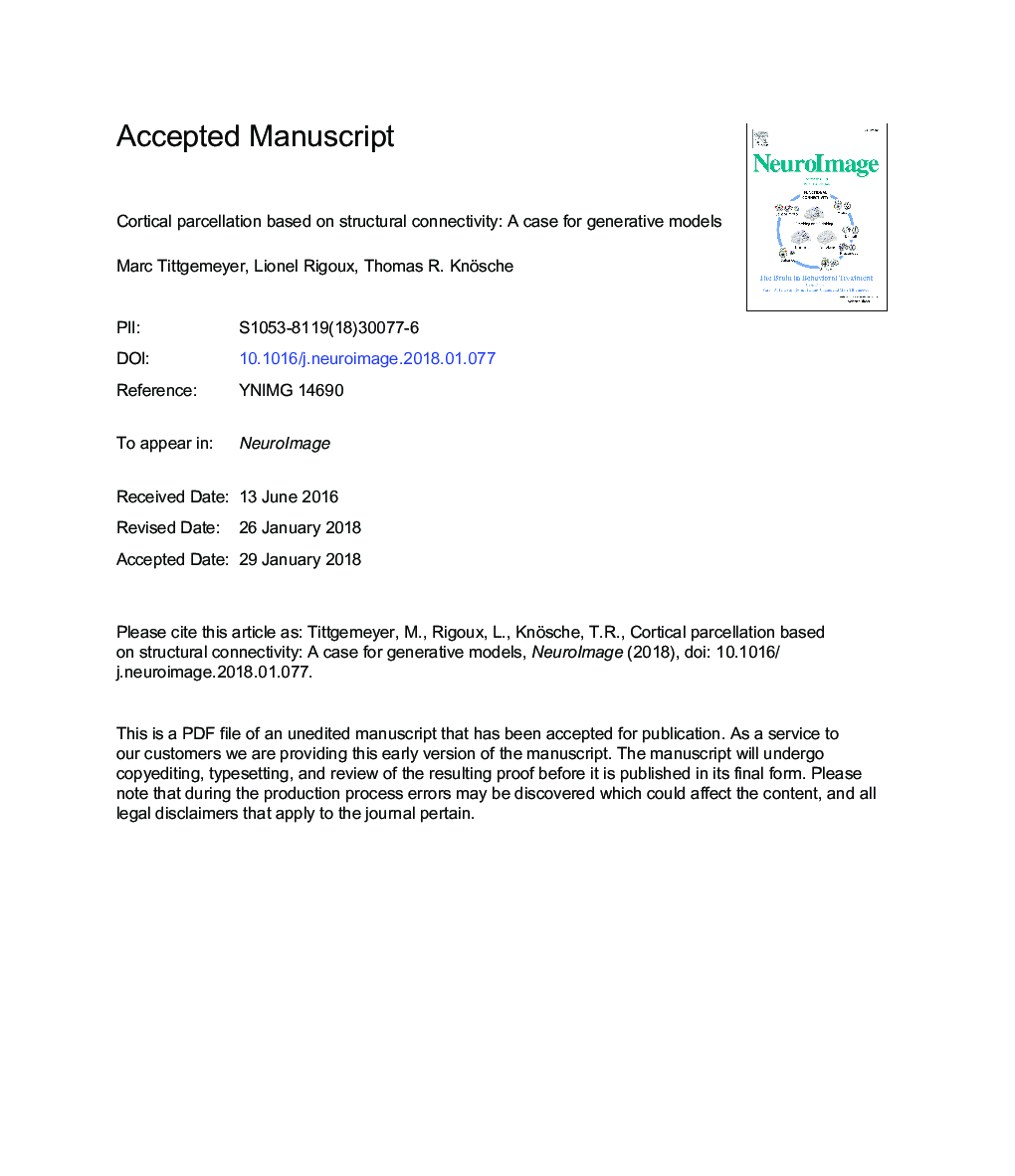| Article ID | Journal | Published Year | Pages | File Type |
|---|---|---|---|---|
| 8686996 | NeuroImage | 2018 | 34 Pages |
Abstract
In this commentary, we first outline the concept of connectivity-based cortex parcellation and discuss its prospects and limitations in particular with respect to structural connectivity. To improve reliability and efficiency, we then strongly advocate for connectivity-based cortex parcellation as a modelling approach; that is, an approximation of the data based on (model) parameter inference. As such, a parcellation algorithm can be formally tested for robustness -the precision of its predictions can be quantified and statistics about potential generalization of the results can be derived. Such a framework also allows the question of model constraints to be reformulated in terms of hypothesis testing through model selection and offers a formative way to integrate anatomical knowledge in terms of prior distributions.
Related Topics
Life Sciences
Neuroscience
Cognitive Neuroscience
Authors
Marc Tittgemeyer, Lionel Rigoux, Thomas R. Knösche,
